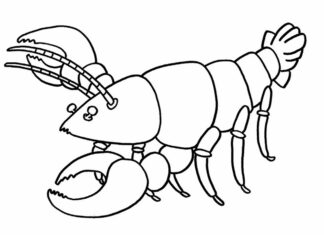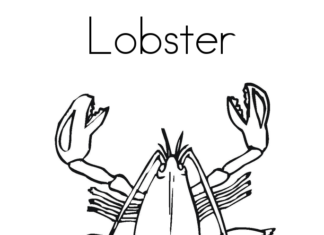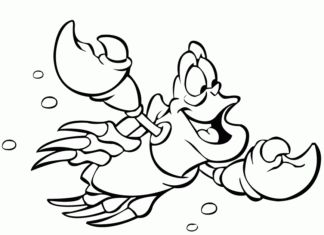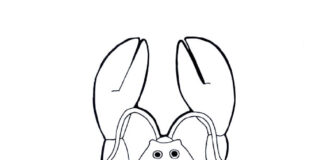Lobster is a type of marine crustacean of the order of ten-legged crustaceans, characterized by a hard body shell and a large, chelate-like thoracic skeleton. Lobsters are known for their culinary value and are enjoyed in many cuisines around the world.
Lobster Coloring Pages
information
- Anatomy: Lobsters have a tough body covering, called armor, that protects their sensitive organs. Their body consists of a head, trunk and tail. There are two large feelers on the head and seven pairs of legs on the thorax, the last two pairs of which are transformed into chelae (pincers).
- Diversity of species: There are many species of lobsters, varying in size, coloration and occurrence. Examples include the European lobster (Homarus gammarus) and the American lobster (Homarus americanus).
- Habitat: Lobsters live at the bottom of the seas and oceans, often in rocky and stony areas. They seek shelter in crevices and burrows.
- Diet: Lobsters are carnivorous and feed on a variety of organisms, such as dead or weakened fish, crustaceans and other marine organisms.
- Reproduction: Lobsters reproduce by external fertilization. Females carry the fertilized eggs under their abdomen for a period of time until the young larvae hatch and swim in the water's depths.
- Culinary value: Lobsters are prized for their tasty meat, which is popular in cuisines around the world. Lobsters are served in various forms, such as boiled lobster, grilled lobster, fried lobster or in salads.
- Fisheries and sustainable fishing: Because of their culinary value, lobsters are commercially fished. However, to ensure the sustainability of lobster populations, many regions are enacting restrictive fishing and conservation rules for the species.
- Culinary symbolism: Lobster is often associated with luxury and special culinary occasions. It is often served in fine dining restaurants and is a symbol of high quality food.
- Migrations: Due to their search for food and ideal habitat conditions, lobsters can move some distances.
- Ecological significance: Lobsters play an important role in marine ecosystems, regulating populations of other organisms and contributing to the health of the ecosystem.
trivia
- Age of the lobster: Lobsters can live quite a long time, with some individuals reaching as old as 50-100 years. One of the reasons for their longevity is the fact that they grow throughout their lives, as well as their ability to regenerate.
- Fight for territory: Lobsters can engage in battles for territory or dominance with their powerful pincers. The outcome of such a fight can depend on the size and strength of the individuals.
- Modern aquaculture: Because of their culinary value, lobsters are increasingly being raised in special ponds and pools as part of aquaculture to ensure a sustainable supply for the market.
- Regeneration capacity: Lobsters have the ability to regenerate their legs and pincers when lost. New legs can gradually grow in place of those that have been lost.
- Sizes: Lobsters can reach different sizes depending on the species and living conditions. Some lobsters can be relatively small, reaching about 20 cm in length, while others can be much larger, exceeding 70 cm.
- Colorful variety: When a lobster is alive, its flesh is usually olive or brown. However, when cooked, the lobster meat turns a distinctive, intense red color.
- Lobster in literature and films: The lobster often appears as a character in literature and movies. For example, Sebastian the lobster from Disney's animated film "The Little Mermaid" is well-known.
- Status symbol: Because of its culinary value and association with luxury, lobster has become a symbol of status and exclusivity, often served in elegant restaurants and on special occasions.
- Reproduction after skin change: During the growth process, lobsters shed their hard body shell, a process called moulting. After moulting, lobsters are particularly vulnerable, but after a while they grow new, larger armor.
- Symbolism in culture: In some cultures, the lobster symbolizes toughness, resilience or rebirth, due to its ability to regenerate and its tough armor.









